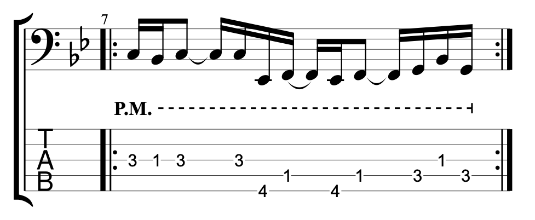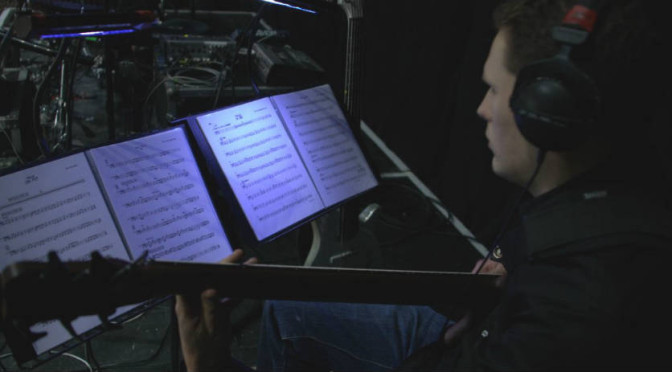5-String Bass Exercises – Three Exercises with Five String Bass TAB – Bass Practice Diary – 29th September 2020
Here are three exercises that you can use on 5-string bass. These are typical of the kind of exercises that I play when I’m adjusting to playing a 5-string bass, especially if I haven’t played one for a while. If you follow my Bass Practice Diary videos regularly, then you know that I play 4-string and 6-string basses a lot. It’s easy to trip up on a 5-string bass when you’ve grown accustomed to playing four or six. A few exercises like this, when you start, will really help you to get used to the feel and the range of the instrument. Even if you always play 5-string bass, and you’re looking to improve your fluency around the fretboard. These kind of exercises are great for that too.
Exercise 1: Playing Across All Five Strings
In this first exercise, I’m simply thinking about arpeggiating two chords. Dm7 and A7(b9).

The exercise starts by going up the notes of a D minor 7 arpeggio. Then it comes down on the A7(b9). I’m relying heavily on the notes of a C#dim7 arpeggio for the A7(b9) chord. The notes C#, E, G and A# are the 3rd, 5th, 7th and b9th of the A7 chord. In the second bar I’ve substituted an Fmaj7 arpeggio for the Dm7 chord. The notes of the F major chord are the 3rd, 5th, 7th and 9th of the Dm7 chord.
Exercise 2: Using the Entire Range of the Bass
In the second exercise, I’m simply playing a C major scale over the entire range of my 5-string bass neck.


This is such a fundamental exercise on any instrument. I don’t think of it as playing a C major scale. I think of it as learning the notes in the key of C major. The whole of Western harmony is built around this key. You can think of it as learning all the white notes on a piano, but really it’s just learning where the notes A, B, C, D, E, F & G are. If you know where they are then you can easily work out where the sharps (#) and flats (b) are. And then you know where every note on your bass is.
Exercise 3: Playing a Bass Groove Using the Low B-string
The final exercise is a bass groove.

If anyone says that, “a bass groove isn’t an exercise, it’s music”, then I think that they need to re-think the way that they practice. To me, every piece of music that I play is an exercise, or at least it can be if I think about it in the right way. Exercises exist to help us play music, if there is a disconnect in your mind between the exercises you play and the music you play, then you’ve missed the point. Every exercise that I play is related to something that I have to use in real musical situations. I understand the relationship between the exercise and the practical application of it. In this particular exercise/groove, I’m working on playing a low Eb on the 4th fret of the B-string, whilst playing in the key of C minor. It’s tricky note to hit and it’s hard to make it sound good!
If you’re looking for some more bass practice exercises, why not try my slap bass timing exercises in this video.

